Scanning Around With Gene: Unsafe at Any Speed

I bought my first car at age 15, before I could drive, from an ad in the local paper. Even my father couldn’t resist the low price: $25 for a running 1960 Chevrolet Corvair. I paid cash to a very nice man and then Dad drove the car home. It arrived without any problems, though it clearly needed some work.
For the next year my dad and I spent all our free time rebuilding that car. My dad did most of the engine work and I took care of the interior and cosmetic details. By the time I turned 16 and got my driver’s license, I had a decent first car. But how I ever survived that vehicle I’ll never know – it certainly felt like one of the most dangerous cars on the road. Thanks to the Free Car Brochures website for some of today’s scans, which all show various Corvair models from 1960 to 1964. Click on any image for a larger version.

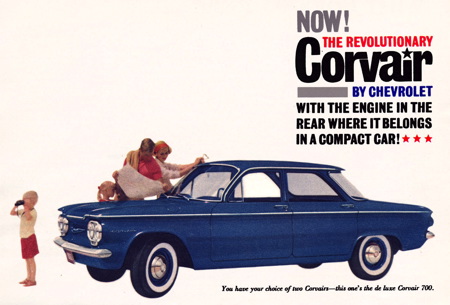
I’m sure my dad went along with the scheme because he wanted a bonding experience with me and to teach me about cars. In those days you taught your sons how to fix motors because people still fixed their own cars, and I did learn a lot about engines. Our family was also recovering from the death of my older sister and my dad had recently lost his job, so the time seemed right for a project to cheer everyone up. I was clearly a depressed teenager at that point and desperate for some mobility.
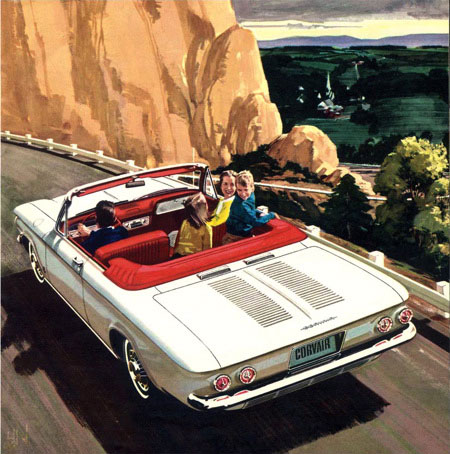

When it was introduced in 1960 the Corvair (named for a combination of the Chevrolet Corvette and Bel Air) was deemed Car of the Year by Motor Trend magazine. The Corvair was America’s answer to the Volkswagen Beetle, complete with an air-cooled engine in the rear and the trunk up front. But this was no wimpy VW bug – the Corvair had a 6 cylinder engine and could be classified in some configurations as a zippy little sports car. And it even came in a van and pickup truck version.


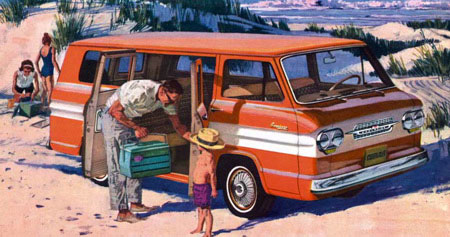
My dad and I tore that car down to the bare bones and completely rebuilt the engine and just about everything else. I made new door panels out of leftover wood bedroom paneling, spray painted the all-metal dashboard, laid some indoor-outdoor carpeting on the floor, and decorated the interior and exterior with a variety of goofy items and unique customizations. I spent the summer riding my bike to various junkyards scouring for parts. I loved that car.
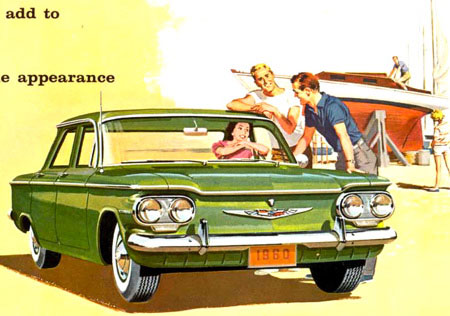

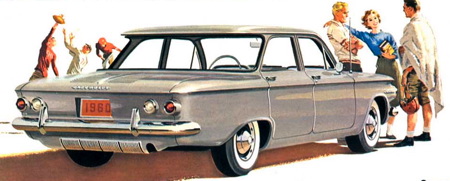
For my sixteenth birthday, my parents paid for a new paint job, which cost $29.95 at Earl Scheib (a chain of car-painting stores headquartered in Los Angeles). I chose midnight blue.


By then (1972) Chevrolet had long discontinued making the Corvair and its safety problems were well known, thanks to Ralph Nader’s best-selling book Unsafe at Any Speed, which prominently featured the Corvair as an example of the unsafe practices of America’s automobile industry. Fortunately my parents weren’t big readers who either didn’t know the car was notorious or didn’t care.

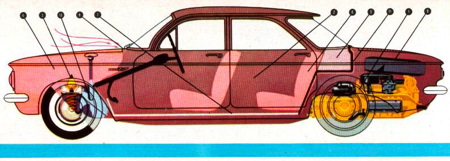
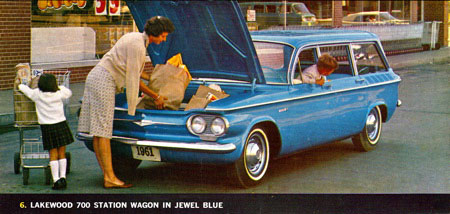
According to Nader, the Corvair’s suspension had a design flaw that caused the rear wheel to “tuck” under during turns, which often led to a lack of control and sometimes deadly spin outs. Combine that with a steering column that did not collapse and supposedly impaled drivers, and it’s no wonder sales dropped dramatically after Nader’s book came out in 1965.
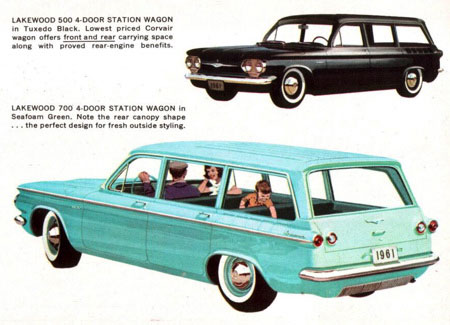
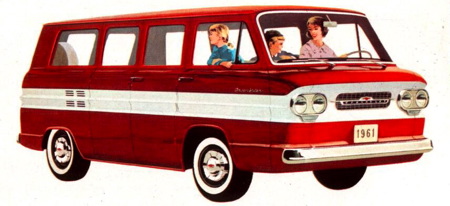
One of the first things I did to my Corvair was to add seat belts, though I bolted them to the rusty floor and they probably wouldn’t have held in an accident. But they were psychologically reassuring.
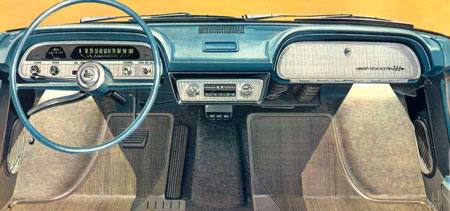

When I turned 16 I began driving that car daily. Living in Los Angeles means driving a lot – from the mountains to the beach. Just going to a movie involved driving halfway across the city.

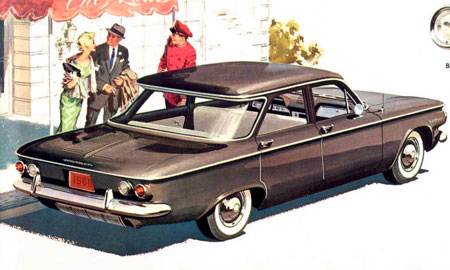
Even after a complete re-build it leaked oil like a sieve (Corvairs were famous for it) and I had to crawl under the car on a regular basis to pop the gear-shift lever back into its socket. The three-speed manual transmission ground a bit in certain gears but I always managed to get where I was going.
For one reason or another, be it luck or skill, I never got in an accident in that car, despite my youthful age and lack of experience.
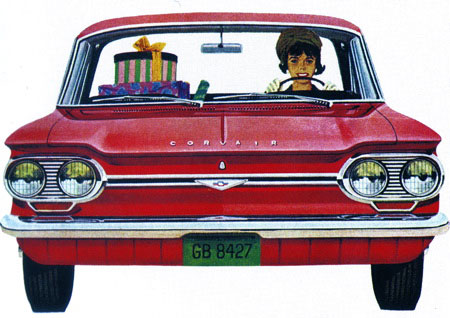

In doing a little research this week I discovered that, according to some independent testing that took place years later, the Corvair was pretty much exonerated of its safety problems. It may not have been much worse than many of the cars of that era, assuming you had good tires and inflated them properly. (I usually bought used tires back then – what teenager could afford new tires?)


I also discovered the Corvair was named by Time magazine as one of the 50 worst cars every made.


These days parents take a little more care in the kind of vehicle they allow their children to drive. But in those days it was the kids who got the junkers, the discards, and the $25 models.

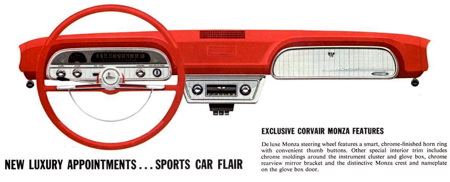
Yet almost all my memories of that car are good ones. It took me all over Southern California and represented freedom to me. Even when I had one of my parent’s cars at my disposal, I took the Corvair. It may have been unsafe at any speed, but it belonged to me.

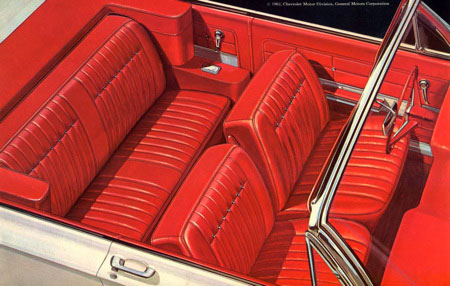
Eventually I sold that car to a neighbor kid who ran it into the ground pretty quickly. It took a little finesse to drive a car like that – you had to baby it and know its peculiarities. I’ve had a lot of cars since then, but none of them have meant as much as my 1960 Corvair.
Follow Gene on Twitter: https://twitter.com/SAWG
This article was last modified on May 15, 2023
This article was first published on February 18, 2011



